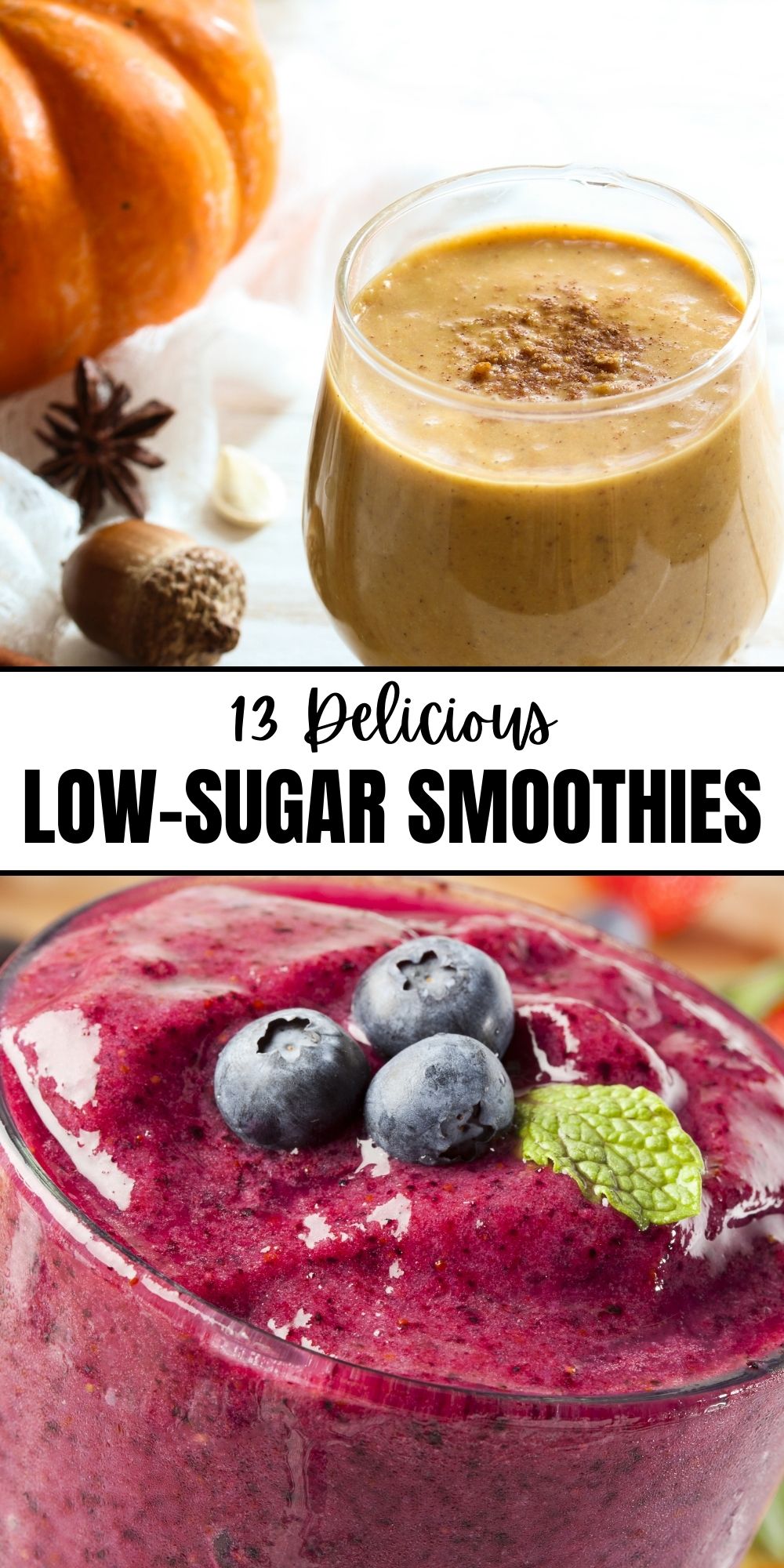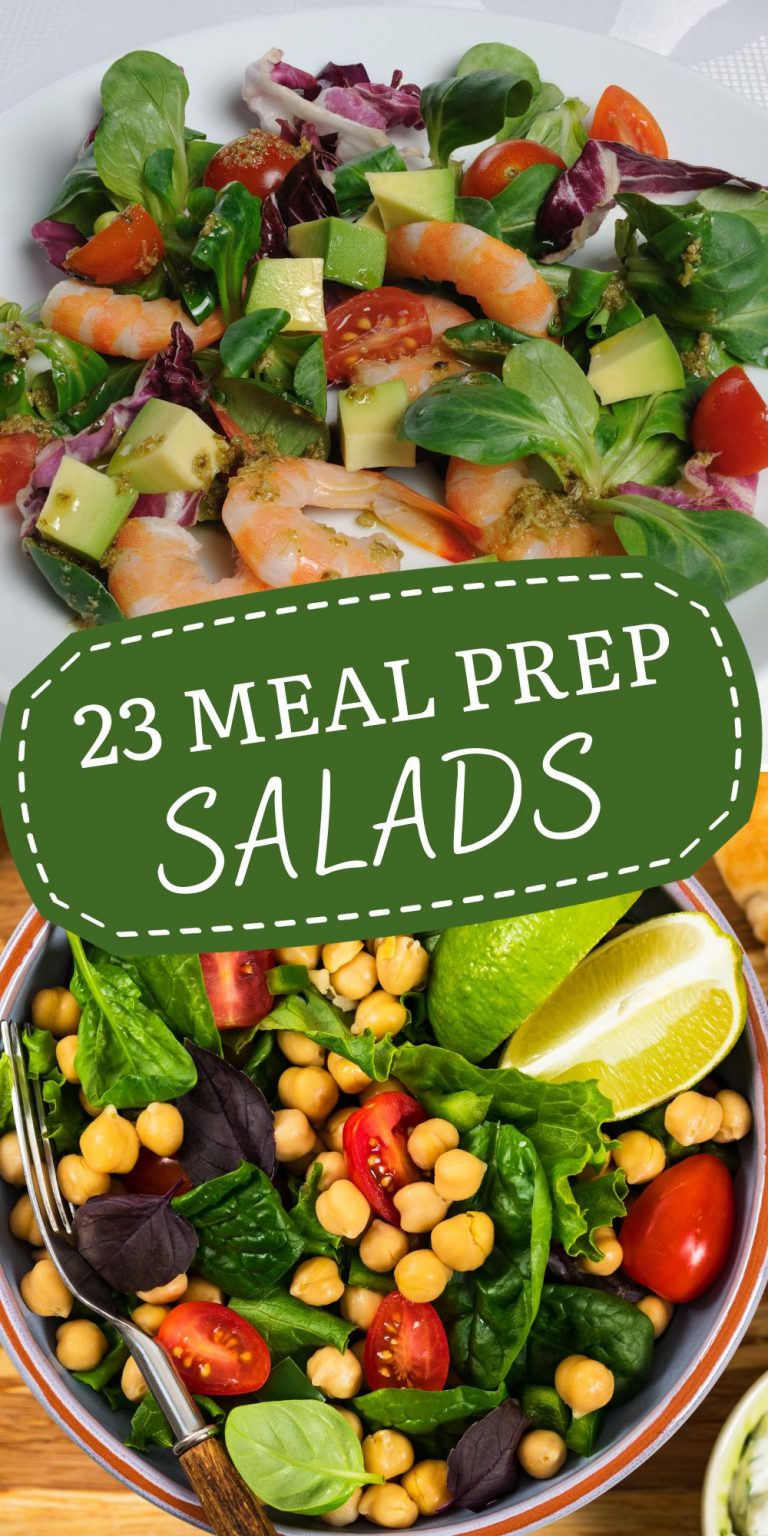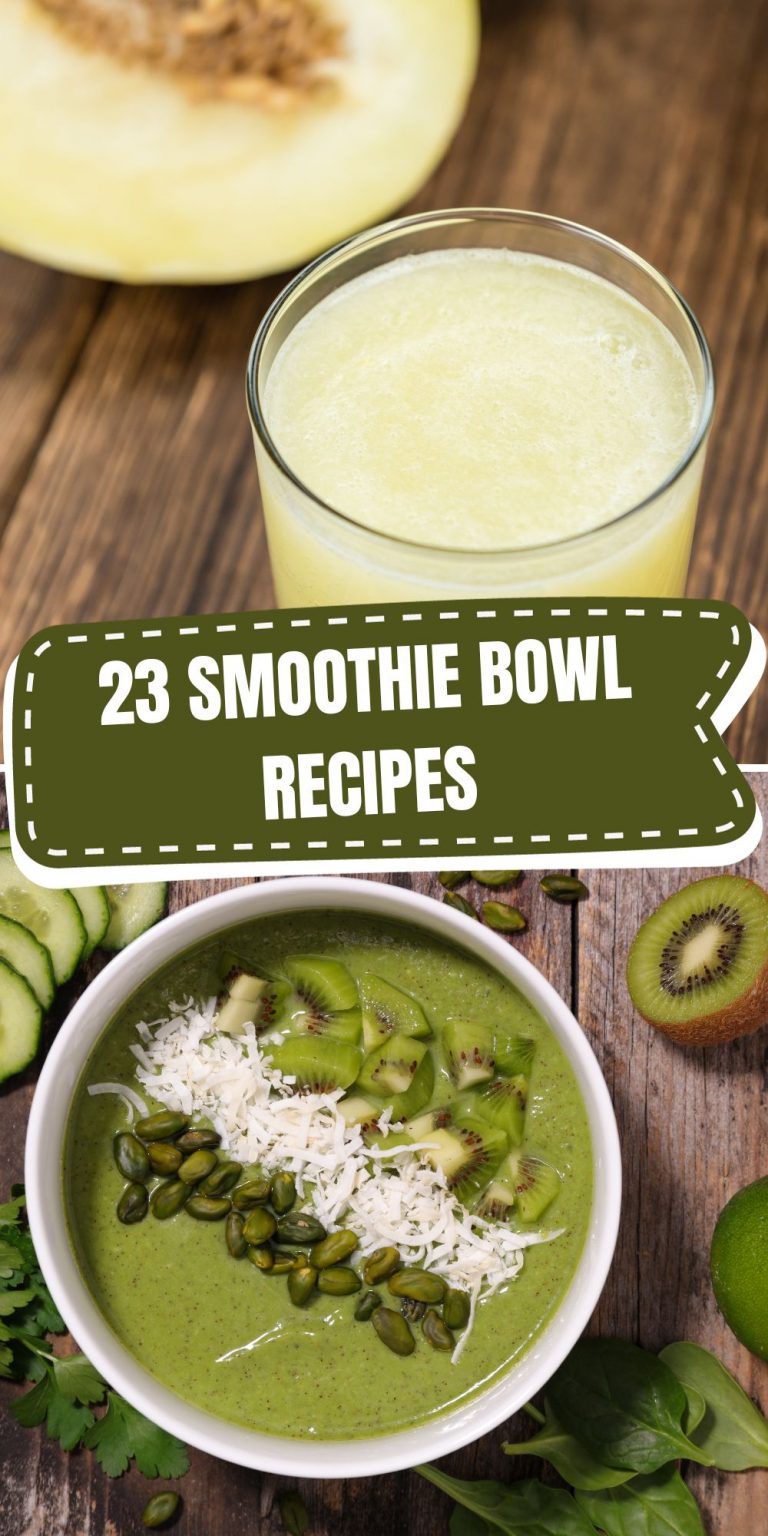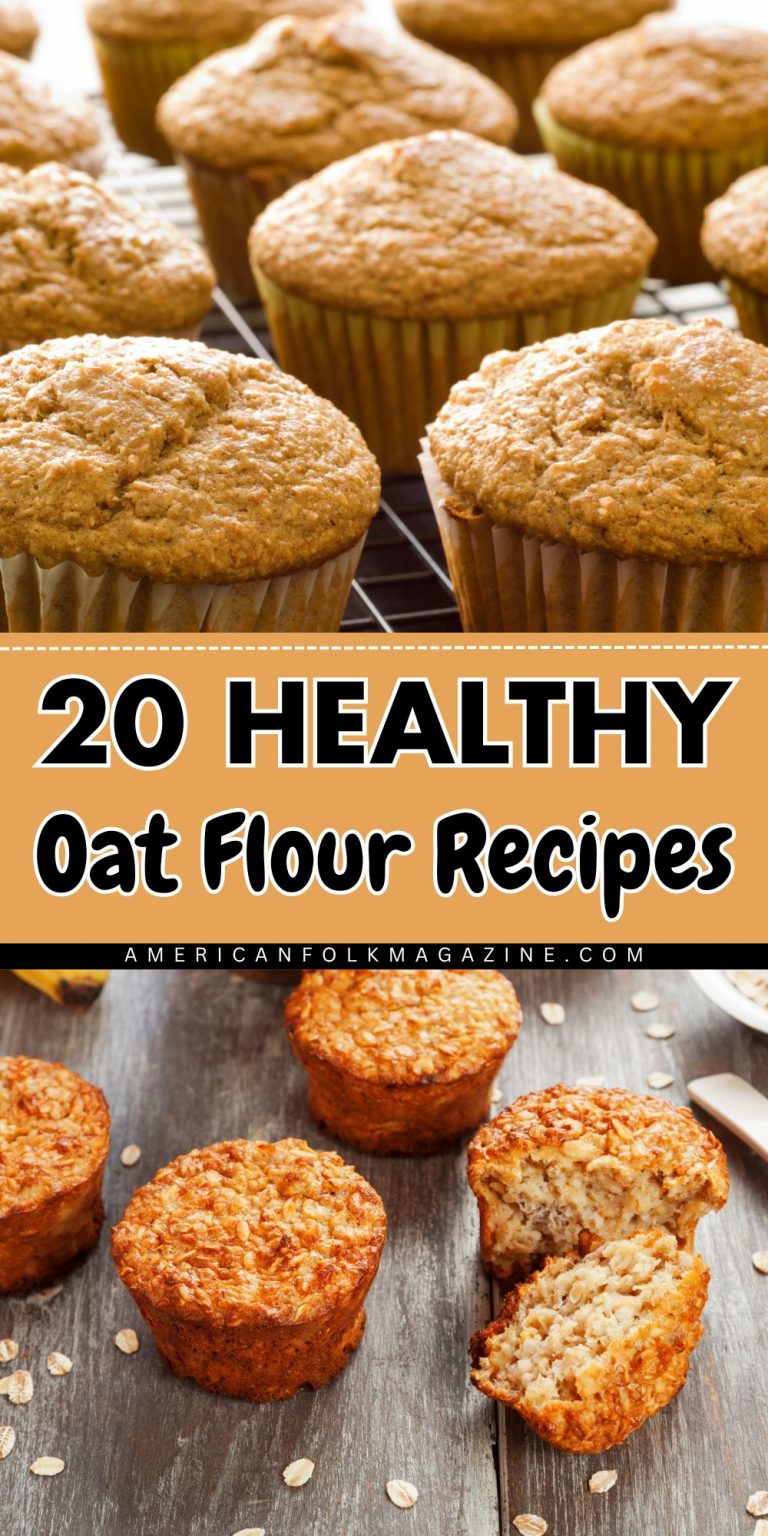I’m on a mission to help you enjoy delicious smoothies without the sugar overload. It’s easier than you’d think, and I promise it doesn’t mean compromising on taste!
Let me guide you through 13 fantastic low-sugar smoothie recipes that are brimming with essential nutrients, perfect for keeping your health and waistline in check.
Trust me, once you try these blends, you’ll never go back to those sugar-laden versions!
How to Reduce Sugar in Smoothies
1. Add More Greens
You’ll find that adding more greens like spinach or kale to your smoothies not only reduces sugar but also increases nutrient content.
I’ve discovered that these leafy veggies are packed with vitamins A, C, and K, fiber, iron, and numerous antioxidants. They’re incredibly beneficial for your health while keeping the sugar levels low.
Broccoli is another mighty green you can add. It might sound odd in a smoothie, but trust me – it’s unnoticeable in taste yet powerful in providing nutrients.
Avocados are also a great option. They create a creamy texture without added sugars and offer healthy fats plus fiber.
2. Reduce High-Sugar Ingredients
Reducing high-sugar ingredients in your smoothie recipes doesn’t mean sacrificing flavor.
In fact, I find my smoothies tastier when I use low-sugar fruits like berries, kiwis, and peaches. They still provide that sweet taste but without the sugar overload.
3. Use Unsweetened Milk or Non-Dairy Milk
It’s a smart choice to swap out traditional milk for unsweetened or non-dairy options when making your favorite smoothie. I’ve found that almond, soy, and oat milks are excellent alternatives, offering similar consistency without the extra sugar.
Coconut milk is another great option if you’re looking for a tropical twist. In addition to reducing sugar content, these non-dairy milks often come fortified with essential vitamins and minerals such as calcium and vitamin D. Unsweetened versions ensure you’re not unknowingly adding extra sugars into your diet.
It’s crucial to read labels carefully because many ‘non-dairy’ options can be loaded with added sugars. By choosing unsweetened or non-dairy milks, I’m taking control of my health and actively reducing my sugar intake.
4. Choose Low-Sugar Ingredients for The Smoothie Base
Choosing the right ingredients for your smoothie base can make a big difference in cutting down on sugar content. I’ve found that avocado, nonfat Greek yogurt, or coconut cream are fantastic low-sugar alternatives.
Avocado gives a creamy texture without adding unnecessary sugars, while Greek yogurt is protein-packed and helps keep me full longer. Coconut cream offers a tropical hint with fewer sugars than fruit juices.
I’m also mindful of choosing fruits that have reduced sugar content like berries, kiwis, peaches, grapefruit, avocado, and melon.
Adding dark leafy greens such as spinach or kale doesn’t just lower sugar levels but boosts nutrient value too!
5. Don’t Overindulge
While they’re definitely delicious and tempting, don’t overdo it with high-sugar smoothies – moderation is key! I’ve found that one of the best ways to ensure this balance is by paying attention to portion sizes.
Instead of a large glass, I use a smaller cup which still satisfies my craving without pushing sugar intake over the edge.
It’s also vital not to replace every meal with a smoothie; these drinks are best used as snacks or breakfast substitutes. Also, remember those little additions like honey or syrup can quickly add up in terms of sugar content.
Which Fruits are Low in Sugar
When considering which fruits to toss into your blender, you’ll find options like lemons, limes, peaches, and strawberries have a surprisingly low amount of sweetness. These are excellent choices if you’re looking to reduce your sugar intake without sacrificing taste or nutrition.
Berries like blackberries and raspberries are not only delicious but also packed with antioxidants while being relatively low in sugar content. Kiwis bring a tropical twist to your smoothie and boast the same benefits!
If you’re a fan of creamier textures, avocados can be your secret weapon; they’re rich in healthy fats yet contain minimal sugars. Cantaloupes offer similar creaminess with less fat content but still keep sugars at bay.
It’s all about choosing wisely and understanding what each fruit has to offer.
10+ Low-Sugar Smoothie Recipes
1. Sugar Free Pumpkin Pie Smoothie
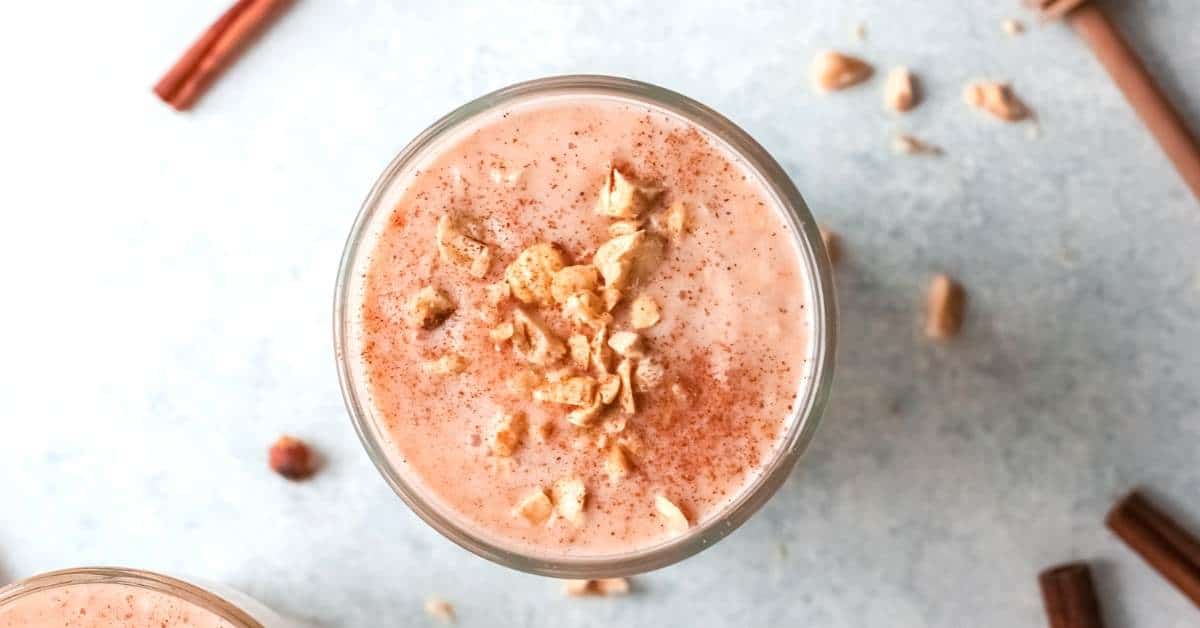
You’ll love the thick and indulgent Sugar Free Pumpkin Pie Smoothie. It achieves its creamy texture from real pumpkin, unsweetened almond milk, and coconut cream without any added sugar. It’s a delightfully decadent treat that gives you all the autumn flavors without wrecking your diet.
I make it using canned pumpkin puree for convenience, but you could also roast and blend fresh pumpkin if you prefer.
To sweeten it naturally, I add a touch of stevia or monk fruit extract – both are zero-calorie natural sweeteners that won’t spike your blood sugar. A dash of cinnamon and nutmeg bring out the classic pumpkin pie flavor.
Enjoy this smoothie as a healthy dessert alternative or as a breakfast on-the-go! It’s packed with vitamins A and C from the pumpkin, while the almond milk provides calcium and vitamin D.
2. Low Sugar Blueberry Smoothie
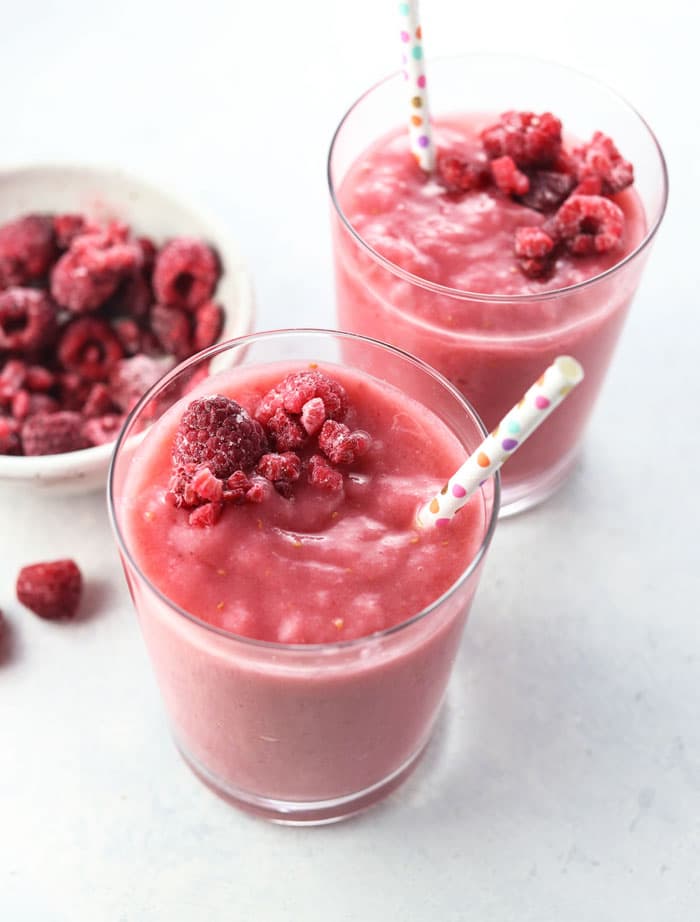
It’s a cinch to whip up the nutrient-dense blueberry smoothie that also includes avocado, banana, and cauliflower florets with a spritz of lemon juice.
I start by blending the ripe banana and creamy avocado together until they’re smooth as silk. Then I add in the frozen blueberries and raw cauliflower florets, which provide an incredible dose of vitamins A, C and K.
After everything is thoroughly blended, I finish it off with a squeeze of fresh lemon juice for a little zing.
This low-sugar blend isn’t just delicious; it’s also packed with antioxidants and fiber.
3. Healthy Green Smoothie
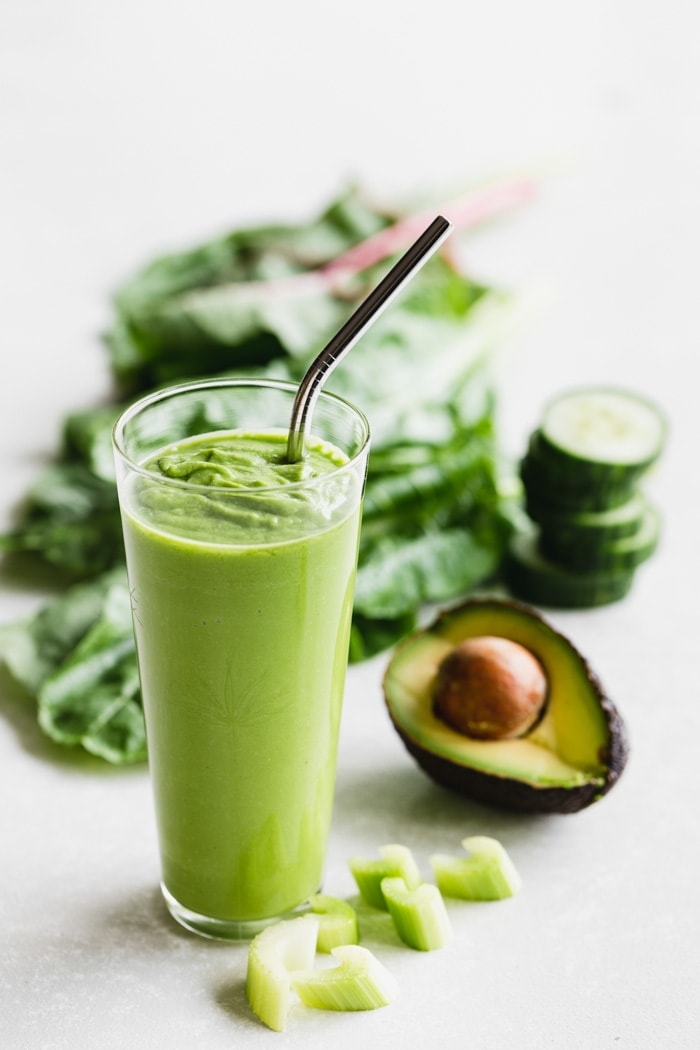
There’s nothing quite like a healthy green smoothie to kickstart your day. Especially when it’s packed with spinach, kale, and other nutrient-rich greens.
I love blending these power-packed veggies with low-sugar fruits like apples or kiwis for natural sweetness. Adding in a scoop of protein powder helps keep me full until lunchtime, while a splash of unsweetened almond milk gives it a creamy consistency.
If you’re new to the green smoothie game, don’t be intimidated! Start small by adding just a handful of spinach to your usual fruit blend. Your taste buds will adjust over time and soon you’ll be craving that fresh green flavor.
Remember – the goal is wellness here, not just weight loss. So enjoy every sip knowing you’re nourishing your body from the inside out.
4. Avocado Smoothie
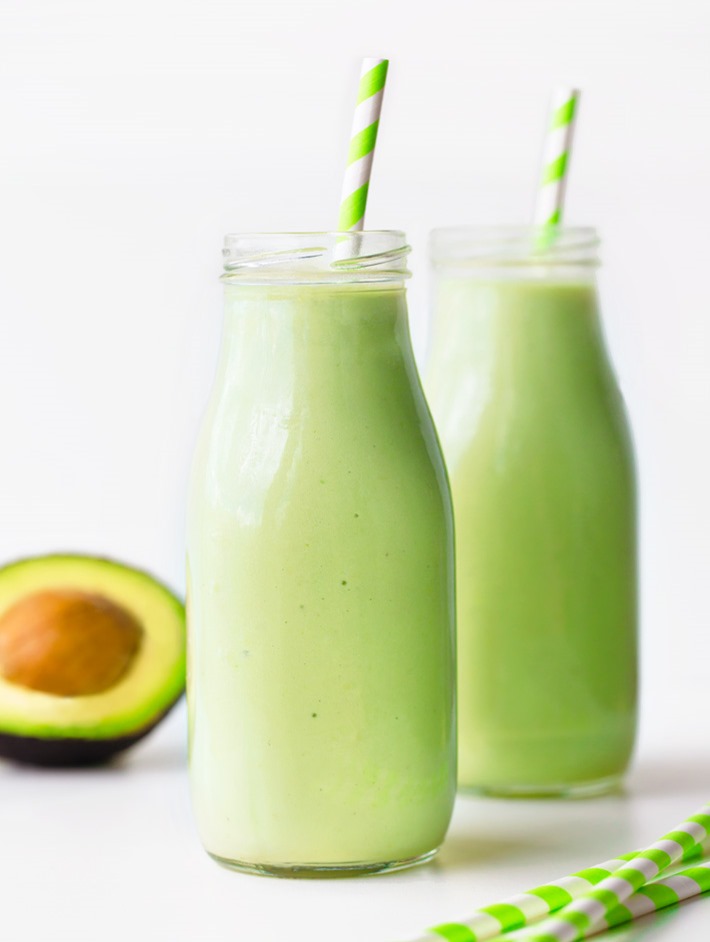
Avocado smoothies aren’t just creamy and delicious, they’re also packed with healthy fats and fiber that can keep you feeling satisfied longer.
I love blending a ripe avocado with a handful of spinach, a splash of unsweetened almond milk, and a small banana for sweetness. It’s not only rich in flavor but also provides essential nutrients like potassium, vitamins K, C, B5, B6 and E.
What’s more? It’s low in sugar! To make it even healthier, sometimes I add chia seeds or flax seeds for an extra boost of fiber and omega-3 fatty acids.
5. Peaches and Cream Smoothie

You’ll adore the refreshing and subtly sweet mix of ripe peaches and creamy non-dairy milk in this delightful Peaches and Cream Smoothie.
I find that peaches, being naturally low in sugar, add just enough sweetness without tipping over into sugary territory. Plus, they’re packed with vitamins A and C, which are essential for skin health and immunity.
Non-dairy milk like almond or oat makes this smoothie plant-based friendly while adding creaminess. It’s also lower in sugar than regular dairy milk. For an added protein boost, I sometimes toss in a scoop of vanilla protein powder.
This deliciously nutritious smoothie is more than just a treat—it’s a smart way to start the day or recharge after a workout. Savour it slowly; it’s wellness you can taste!
6. Perfect Kiwi Recipe for Beginners

It’s simple to whip up a Perfect Kiwi Recipe for Beginners, featuring ripe kiwis, bananas, spinach, and almond milk.
I love how the tartness of the kiwis perfectly balances with the sweetness of ripe bananas. The addition of fresh spinach offers a nutrient boost without overpowering the fruity flavors.
What I find great about this smoothie is that it’s low in sugar but doesn’t compromise on taste.
The almond milk gives it a creamy texture while offering dairy-free nourishment. It’s perfect if you’re looking for an easy, healthy way to start your day or as an afternoon pick-me-up.
The recipe can be easily adjusted based on personal preferences. So go ahead and try this refreshing blend!
7. Skinny Strawberry Cheesecake Smoothie
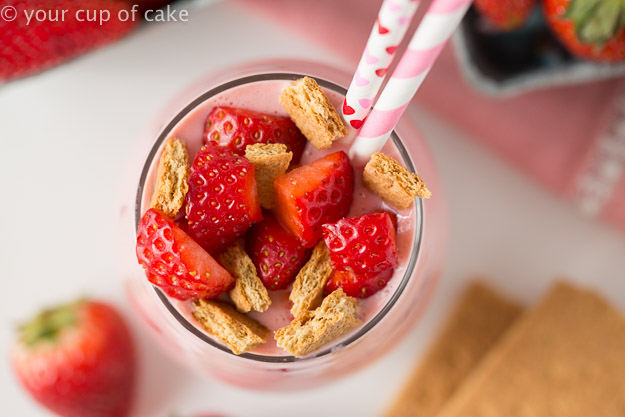
Next on your list should be the Skinny Strawberry Cheesecake Smoothie. This delightful treat combines ripe strawberries and bananas with Greek yogurt or cottage cheese.
It’s a guilt-free indulgence packed with essential nutrients and low in sugar. It’s the perfect solution for satisfying your sweet cravings without derailing your healthy eating habits.
The strawberries in this smoothie provide vitamin C and antioxidants. The banana adds dietary fiber that aids digestion. And the Greek yogurt or cottage cheese offers protein that keeps you feeling satisfied longer. Plus, it adds to the creamy cheesecake texture we all love!
I’ve also added a hint of vanilla extract to enhance the flavor without adding extra calories or sugar.
8. Strawberry Banana Smoothie

Let’s move on to the Strawberry Banana Smoothie, a delightful blend of fresh strawberries and bananas with your choice of non-dairy milk.
This smoothie is not only delicious but also incredibly healthy. Strawberries are packed with vitamins, fiber, and high levels of antioxidants; they’re low in sugar and calories too.
Bananas, on the other hand, provide a natural sweetness that eliminates any need for added sugars. They’re an excellent source of potassium, which aids in maintaining heart health and blood pressure.
Using non-dairy milk like almond or coconut gives this smoothie a creamy texture without adding unnecessary sugars or fats. If you want to boost its protein content, feel free to add Greek yogurt or a scoop of your preferred protein powder.
It’s refreshing, nutritious and guilt-free!
9. Low-Sugar Raspberry Smoothie

You’ll love the decadent yet light taste of the raspberry smoothie, which cleverly uses a banana for natural sweetness and plant milk for creaminess. This blend is not only delicious but also full of health benefits.
Raspberries are packed with antioxidants that fight inflammation and disease, while bananas provide essential potassium for heart health. The plant milk contributes to your daily protein intake without adding unnecessary sugars or fats.
A hint of agave syrup adds sweetness without spiking your blood sugar levels, making this smoothie perfect for those who are mindful about their diet.
And don’t forget the spritz of lemon juice; it’s like a bit of sunshine in every sip!
10. Healthy Beetroot Kale Smoothie (High Protein)

Incorporating beetroot and kale into your smoothies can significantly boost their nutritional value, providing you with an excellent source of protein.
These two ingredients, often overlooked in traditional smoothie recipes, pack a powerful punch when it comes to nutrition.
Beetroot is rich in fiber, vitamin C, and essential minerals like potassium. Kale offers vitamins K, A and C along with numerous antioxidants.
I’ve found that adding a handful of cooked quinoa for an extra protein kick is a great option. Also, using plant-based milk as the liquid base enhances the overall flavor without adding unnecessary sugars.
To add natural sweetness and creaminess to my blend, I throw in a ripe banana. This vibrant yet nutritious concoction not only fuels my body but also tantalizes my taste buds!
11. Skinny Chocolate Recovery Shake
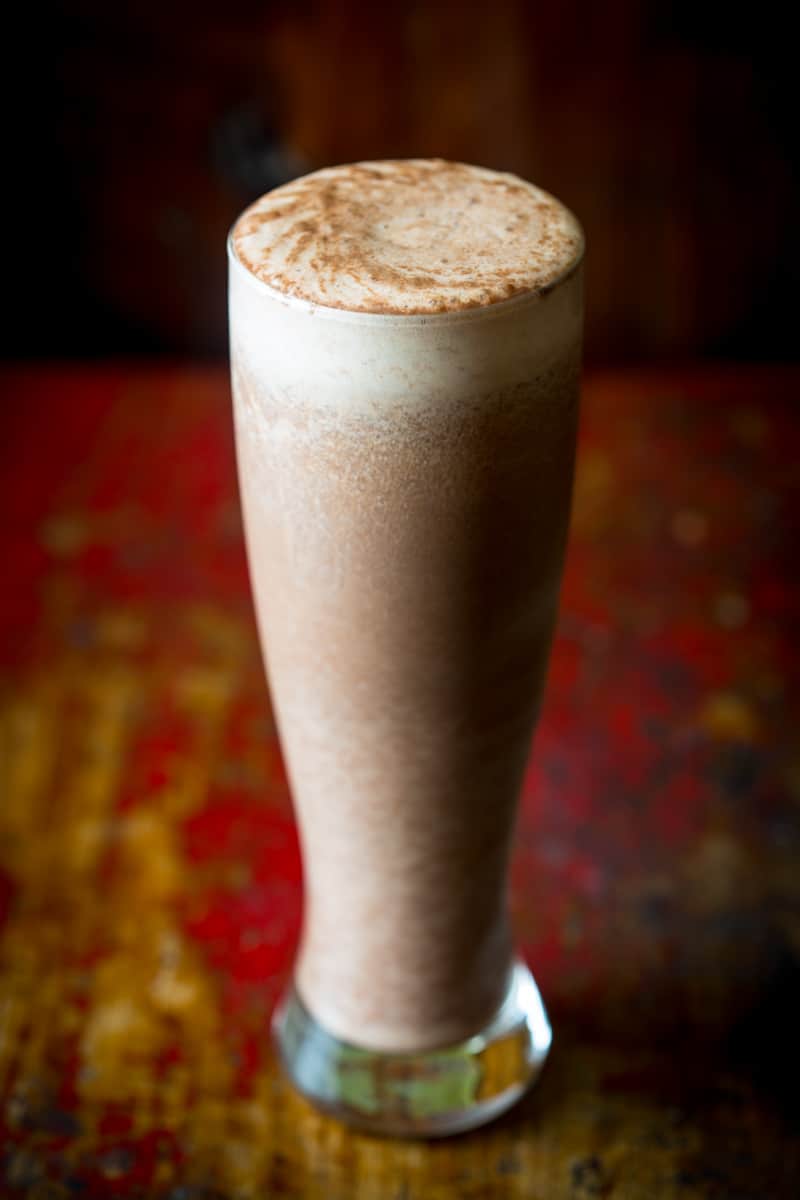
It’s a common misconception that all chocolate shakes are unhealthy, but the Skinny Chocolate Recovery Shake is here to shatter that belief.
Packed with nutrient-rich ingredients like banana and protein powder, this shake offers an ideal balance of taste and health benefits.
The cocoa powder provides antioxidants while the almond milk adds a touch of creaminess without excess sugar or fat.
An optional splash of maple syrup lends a hint of sweetness, but it’s not necessary for those strictly watching their sugar intake.
This recovery shake isn’t just for post-workout nourishment; it’s also great as a breakfast option or afternoon pick-me-up.
12. Orange Carrot Smoothie

Brimming with vitamins, the Orange Carrot Smoothie offers a refreshing twist while keeping your health in check. I love how its vibrant colors mirror the energy boost it provides.
Oranges are packed with vitamin C, supporting immune function and skin health, while carrots bring beta-carotene to the table, promoting good vision and glowing skin.
The addition of ginger doesn’t just add a spicy kick; it also aids in digestion and fights inflammation. I like to use non-dairy milk as my liquid base for an extra dose of calcium without any lactose concerns.
The result? A low-sugar beverage that’s high in nutrients and flavor!
13. Java Chip Mocha Green Smoothie

You’re gonna love the Java Chip Mocha Green Smoothie. It’s packed full of nutritious greens and has a caffeine kick to start your day off right.
This smoothie’s not just tasty but also low in sugar and high in fiber. It’s an ideal breakfast or midday snack.
It’s loaded with spinach for some iron and vitamins, avocado for healthy fats, and coffee for that energy boost we all need sometimes. The cocoa nibs give a chocolatey taste without the extra sugar found in regular chocolate chips.
Almond milk is my choice for this recipe. It complements the other flavors well while keeping calories low.
Don’t worry if you’re not keen on green smoothies. The mocha flavor masks any veggie taste!

